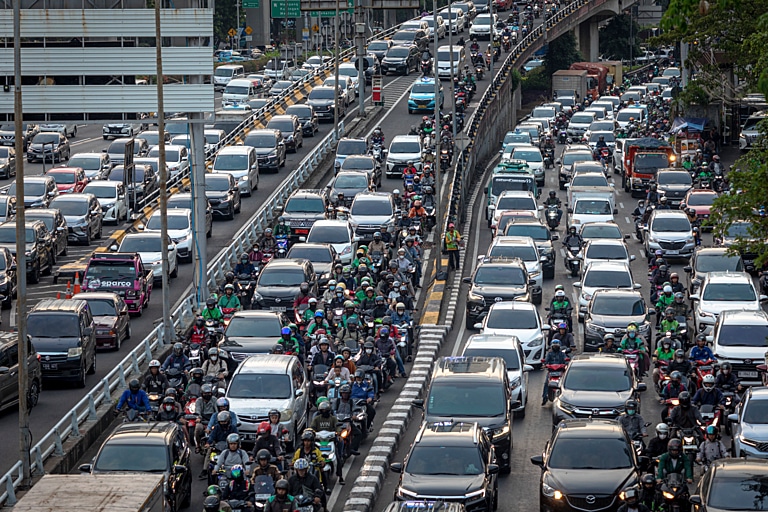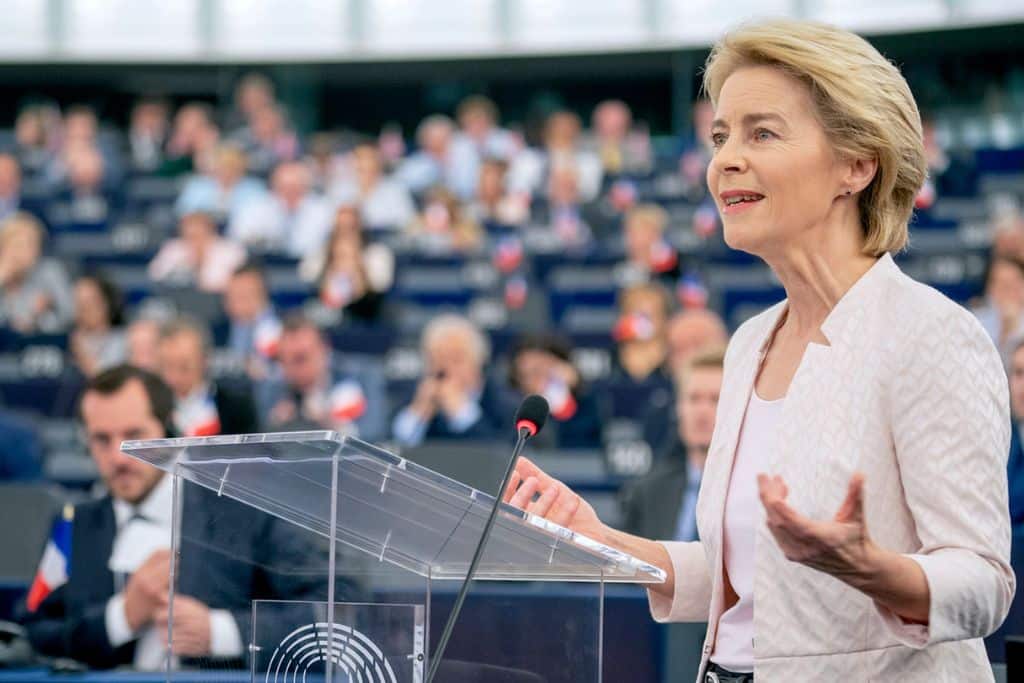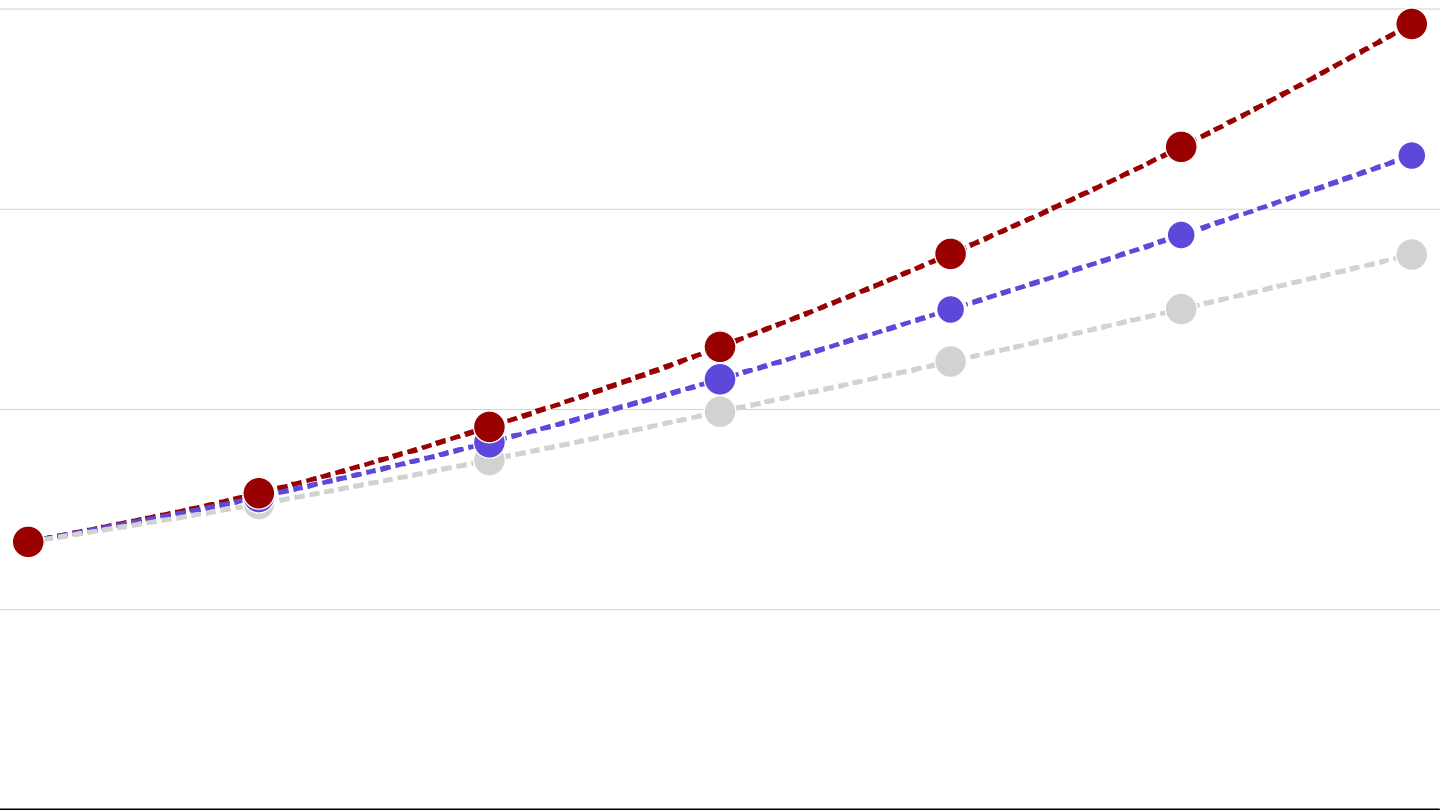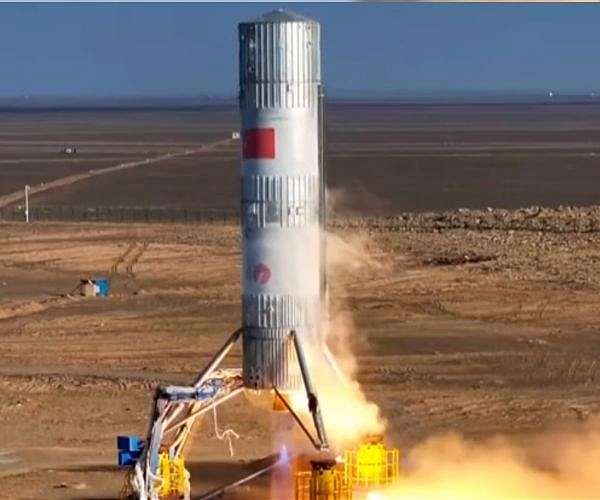ANI |
Updated: Oct 23, 2025 05:44 IST
Jerusalem [Israel],…

Infectious Disease Advisor The presence of long COVID symptoms after infection with SARS-CoV-2 is strongly associated with the development of cardiovascular disease (CVD) in United States adults,…

News Wise In the field of food supply chain management during public health emergencies like the COVID-19 pandemic, government-led food supply chains are critical for ensuring residents’ dietary needs. However, such chains face significant challenges: insufficient transportation capacity, uneven distribution of district warehouses, and production-demand mismatches lead to severe food shortages. Existing research mostly focuses on non-government-led supply chains, lacks dynamic analysis of pandemic phases, and has insufficient scenario simulations for government-led chains, making it hard to provide targeted recovery strategies.
Therefore, a research team from the School of Information Technology and Artificial Intelligence at Zhejiang University of Finance and Economics conducted a study titled “Recovery strategies for government-led food supply chain in COVID-19 pandemic: A simulation study”.
This study uses AnyLogistix software to build a three-level government-led food supply chain simulation model (designated suppliers, district warehouses, communities) and divides the pandemic into four phases (initial, silent management, express resumption, full recovery) with corresponding government-led demand ratios (75%, 125%, 50%, 25%). It designs seven recovery strategies and simulates two disruption scenarios (supplier/warehouse closure) to test strategy robustness.

A ban on the sale of new CO2-emitting cars and vans by 2035 within the European Union is currently being reviewed, reflecting the bloc’s broader strategy to redirect its focus away from the climate crisis to other pressing issues like economic security and international conflicts.
—
On September 12, the European Commission announced it would move up its review of the 2035 zero CO2 emissions target for cars and vans to the end of this year, rather than 2026.
The European Commission in 2022 announced plans to ban the sale of new CO2-emitting cars and vans by 2035 within the EU.
Several EU governments criticized the move, raising concerns about consumer choice and the feasibility of the transition. Italy, Portugal, Slovakia, Bulgaria, and Romania called for a delay to the ban. Germany also expressed criticism, advocating for a gradual transition rather than an outright ban on CO2-emitting engines. The German government reaffirmed its stance earlier this month during an automotive summit in Berlin reuniting German manufacturers, subcontractors, and representatives.
“2035 cannot be a hard deadline. That is not technically feasible,” said German Chancellor Friedrich Merz during a press conference. The government argued, in line with the position of the European Automobile Manufacturers Association (ACEA), that the 2025 emissions reduction plan should be reconsidered to protect Europe’s industrial competitiveness and the resilience of its supply chains.
The scaled up review comes in the context of weak European demand and a shift to electric vehicles (EVs). It will specifically target vans, Reuters reported. Other specifics on the new proposal remain unclear, but it may allow for the inclusion of biofuels that could continue to power internal combustion engines, plug-in hybrids or range extenders.
The Commission’s 2022 proposal received widespread criticism from European car manufacturers amid declining demand for EVs. For instance, about 8.5% of all vans sold are electric, while the figure for passenger cars is about double. In addition to weak demand in Europe, Chinese manufacturers offer electric vehicles at significantly lower prices, leaving European carmakers struggling to compete with these market leaders. More recently, US import tariffs have also made it more difficult for European carmakers to access the American market, adding another strain on the industry as a whole.
In March, the European Commission unveiled a rescue plan for the EU automotive industry, which provides 13 million jobs and contributes 7% of the bloc’s GDP. The plan includes 1.8 billion euros (US$2.1 billion) to secure raw materials for battery production within the EU and 1 billion euros by 2027 to support innovation in the automotive sector. It also seeks to stimulate demand for EVs.
Alternative measures under discussion include creating a new category for small EVs with tax advantages and extra CO2 credits to help manufacturers meet emissions reduction targets. The plan also aims to support local production of key components such as battery packs.
The potential rollback of the ban reflects a broader pattern of the EU backtracking on some of its previous climate commitments, raising doubts about whether the region still stands as a global leader in the climate and renewable energy transition.
The European Green Deal (EDG), adopted in 2020, is the cornerstone of the Commission’s sustainable policies. The deal covers several policy areas with the aim of transforming the bloc’s economy for a sustainable future. One of these goals is a 55% bloc-wide reduction in greenhouse gas emissions by 2030.
But growing resistance from right-wing groups, geopolitical tensions, and mounting pressures from industry and farmers, the future of the EU’s once-ambitious climate goals now hangs in the balance.
More on the topic: What Is the Future of the European Union’s Once Ambitious Green Agenda?
Climate-related investments in the EU have stalled after years of growth. According to a recent report by the Institute for Climate Economics, spending in the energy, transport, building, and low-carbon technology sectors stagnated in 2023, reaching 498 billion euros and declining in 2024 for the first time in several years.
The report notes that an estimated 842 billion euros are needed yearly for the EU to reach its 2030 climate targets, representing an annual shortfall of 344 billion euros. Nevertheless, in May, the Commission announced that the EU was “well on track” to reach the goal of reducing CO2 emissions by 55% that they set for themselves for 2030.
In February, the Commission presented the Omnibus Simplification Package, a set of European Commission proposals aimed at simplifying and streamlining EU rules for corporate sustainability reporting by reducing disclosures or simplifying obligations, marking a major shift in the EU’s climate policy approach. The initiative is part of a broader strategy to boost Europe’s competitiveness in an uncertain geopolitical context, driven by concerns that the European economy is stagnating. The main reasoning behind advancing the package was that too much reporting and due diligence reduced European competitiveness.
In September, the EU-Mercosur Trade Agreement, controversial for its significant environmental consequences, was approved by the European Commission. The deal aims at securing markets for European businesses and ensuring stable partnerships, especially in the automotive industry – a sign that competitiveness and trade is progressively taking precedence over environmental objectives.
Under the deal, EU-Mercosur trade in automotive components will be fully liberalized within 15 years, creating a stable political and economic partnership. Interestingly, on October 13, 26 major EU trade associations, notably the the ACEA, called for the fast, “swift ratification” of the EU-Mercosur agreement in a co-signed statement towards the EU’s institutions.The agreement is also expected to accelerate deforestation by up to 25% due to increased demand for agricultural products such as soy and sugar.
More on the topic: The EU-Mercosur Deal Comes With Serious Environmental and Social Implications
One of the most important factors explaining European scaleback is the 2024 European parliamentary election, which saw a historic surge of support for right and far-right parties, generally opposed to climate policy action.
The new right-wing majority in the European Parliament is made up of a coalition of the European People’s Party, Conservatives and Reformists of Europe, and the Patriots for Europe (former Identity and Democracy group). The coalition has repeatedly pushed for competitiveness and deregulation, criticizing the economic costs of a green transition.
For instance, in July, the far right group Patriots for Europe, currently the third largest group in the European Parliament, took control of a key climate text. Originally introduced by the Commission as a recommendation to cut greenhouse gas emissions by 90% by 2040, the proposal is now being examined and debated by the Parliament before a final vote.
Patriots of Europe lobbied actively and used their influence to secure the position of “rapporteur” for the reform of this climate law. A rapporteur in the European Parliament is a member of parliament that is appointed by a parliamentary committee responsible for handling a specific legislative proposal, to write a report containing proposals for resolutions and amendments to be voted on by the entire Parliament. The rapporteur steers their proposals through Parliament, consults with specialists, discusses the proposal with other members within the committee and “recommends the political line to be followed.”
The 2040 target is still being actively negotiated in Parliament and, substantively, the rapporteur from Patriots of Europe will not have the power to prevent other parties from reaching an agreement on the final version of the law. However, by holding this post, Europe’s far right could seek to delay or inflame the negotiations.
The European right has echoed the sentiments by certain segments of the population that view the Green Deal legislative package as elitist and disconnected from the economic consequences of the green transition. For instance, following widespread farmers’ protests in France, Italy, Spain, and Belgium last year, the Commission backtracked on several green programs, including the implementation of crop rotations or cuts to fertilizer use.
Another key factor contributing to the EU’s shifting priorities is the broader geopolitics context, which has shifted significantly since the implementation of the European Green Deal.
Russia’s invasion of Ukraine in 2022 shook the balance of Europe’s transition and exposed the vulnerabilities of the continent’s energy infrastructure. With a large share of its energy supply coming from Russian natural gas reservoirs, the war triggered a sharp rise in energy prices. The war, along with dealing with the aftermath of the Covid-19 pandemic, forced Europe to prioritize defence and security over the climate crisis.
Paradoxically, pausing climate action will likely undermine European security in the future.
For instance, 2025 saw temperature records breached multiple times across many European regions. Nearly one million hectares have burned in the EU so far this year, marking the region’s worst wildfire season on record, and scientists have warned EU lawmakers that this summer’s extreme weather events could impose at least 43 billion euros in short-term costs on the region’s economy. In 2024, record-breaking temperatures, droughts and flooding led to short term losses equivalent to 0.26% of the EU’s economic output in 2024.
As the COP30 climate summit in Brazil approaches, the EU remains divided over its climate ambitions. Last month, European environment ministers adopted a vague declaration of intent on reducing greenhouse gas emissions by 2035. In the absence of an agreement, the EU did not present a consolidated emissions reduction plan to the United Nations before the given deadline. According to French newspaper Les Échos, negotiations on the EU’s 2035 climate target stalled after several countries, including France and Germany, pushed to discuss the 2040 objective at the upcoming European leaders’ summit at the end of October, an approach that disrupted ongoing talks on the 2035 target.

European Commission President Ursula von der Leyen assured that the EU will have new climate targets by the COP30 summit. “How we reach these targets will be different. The world has changed. Global competition is fierce and not always fair. We need more flexibility, more pragmatism,” she said.
It is also important to note that the EU is still actively promoting the climate transition and some of its objectives are being reached.
For instance, the EU’s emissions trading system (EU ETS), a market mechanism that gives CO2 a price and creates incentives to reduce emissions in a cost-effective manner, has successfully reduced emissions in power generation and energy-intensive industries such as the production of iron. According to the European Parliament, between 2005 and 2023, the EU ETS helped reduce emissions from these sectors by 47%.
While setbacks and compromises persist, the EU’s fight against the adverse effects of climate change continues to evolve. Its challenge for the future will be to strategically maintain levels of progress in the climate and energy transition while mitigating continued geopolitical and economic constraints.
Featured image: Aji Styawan/Climate Visuals.
Our non-profit newsroom provides climate coverage free of charge and advertising. Your one-off or monthly donations play a crucial role in supporting our operations, expanding our reach, and maintaining our editorial independence.
About EO | Mission Statement | Impact & Reach | Write for us

The data center construction boom has entered a new chapter. AI adoption is accelerating, and the floor of potential demand is rising, according to Bain’s latest global data center forecast through 2030.
The early scramble of generative AI–driven demand is giving way to a more disciplined, selective, power-constrained, and execution-focused phase of growth. Hyperscaler tech companies are absorbing compute capacity, large enterprises are scaling up production-grade AI, and data center construction patterns are starting to form around clearer plans for continued growth and demand. Although the capacity growth rate isn’t certain—due to variability in AI adoption and developers shopping around for the best sites to build on—there are clear signs that momentum and growth will remain strong. Going forward, winners will be defined not by scale alone but by their ability to navigate complexity with precision.
Our forecast combines bottom-up scenario modeling with insights from across our Energy & Natural Resources and Technology practices. The latest update reflects five sector trends that have defined the past 12 months.
Data centers are also being designed to accommodate flexibility between training and inference workloads, partly by implementing multiple cooling options. Operators are trying to avoid sunk assets amid increasing complexity. They’re also exploring distributed training, which may herald a change in training architecture.
The authors wish to thank Paul Bockwoldt and Fernando Valdes for their contributions to this analysis.

Mark SavageMusic correspondent
 Jack Robinson
Jack RobinsonA couple of months ago, I found myself in a field backstage at Glastonbury standing next to Sam Ryder.
It was seven in the…

Walsh highlights Chelsea’s vision for the future but also the ghosts of the recent past.
Against Ajax, Chelsea gave minutes to 10 players aged 21 or younger, having not played a player over the age of 28 since the beginning of last season.
Chelsea…

Laid out in the chief executive’s 2025 policy address (118-page // 865KB PDF), the changes will reshape compliance obligations, contractual frameworks and operational risk management across multiple sectors of the economy, with particular impact on financial institutions, logistics providers, technology companies and in-house legal teams, according to technology law expert Jennifer Wu of Pinsent Masons.
The changes when shaped could affect how contracts are formed, how shipping documents are authenticated and what counts as admissible evidence in a dispute. Businesses moving goods across borders will require systems that can generate, sign and store documents electronically in ways that satisfy both Hong Kong law and the legal requirements of other jurisdictions involved in the transaction.
Wu said: “The 2025 Policy Address signals a regulatory pivot towards digital trade, smart mobility and AI accountability. For businesses, this is both a compliance challenge and a strategic opportunity.”
“Electronic trade documentation will streamline cross-border transactions but requires robust systems for authentication, security and evidentiary integrity,” she said.
“The shift raises practical questions about digital signatures, system security, audit trails, and records retention. Exporters, freight forwarders and trade finance providers should map their current processes against likely legislative requirements, particularly where paper documentation is still standard practice, or where multiple parties in different jurisdictions must access the same documents.”
Under the planned legislation, from 2026, business-to-business trade documents in electronic formats will be legally recognised. Hong Kong SAR’s trade platform will link with systems in operation in mainland China and other ASEAN countries, while upcoming trials are replacing paper bills of lading with digital equivalents.
Legislation for drones, air taxis and other low-altitude aircraft, part of an action plan to develop transport and logistics by air, was also announced. The rules will cover safety standards, flight routes, landing sites and traffic management, while a regulatory ‘sandbox’ will let companies test these services under government supervision.
Wu said: “For logistics companies, the regulatory requirements may differ significantly from ground transport.”
“For technology providers, the sandbox offers early-mover advantage but requires detailed submissions on safety, cybersecurity and operational protocols,” she said.
“Multi-party contracts between aircraft operators, technology suppliers, insurers and customers, will need clear risk allocation, particularly where regulatory standards are still developing. Businesses should monitor draft legislation for detail on certification processes and liability rules.”
The framework will need to address operator licensing, safety certification, insurance cover, liability for accidents, and data protection where aircraft capture images or location data.
Wu said: “Contracts must address certification, liability, and data protection in an evolving legal landscape.”
“Meanwhile, AI governance expectations are increasing, particularly for financial services, where regulators will demand transparency, bias mitigation, and secure data handling,” she said.
“Organisations that act now – by auditing processes, updating governance frameworks, and engaging with regulatory consultations – will not only reduce legal risk but also gain a competitive edge in adopting these technologies.”
Three AI-related measures were announced in the policy address: a mechanism for transferring data from mainland China to Hong Kong SAR for research under secure conditions; new infrastructure including an AI supercomputing centre and a data facility cluster; and governance requirements including mandatory testing for government AI systems.
Wu said: “These measures point to increased regulatory expectations on AI security, transparency and accountability in the adoption of AI, especially in financial services.”
“Organisations using AI should review their governance arrangements – data protection compliance, model testing, bias checks and vendor oversight – against the standards likely to be applied by supervisors,” she said.
“The data transfer mechanism may enable new AI applications using cross-boundary datasets, but only under defined security controls.”
Regulatory details of AI governance are expected to be released in the next 12 to 18 months. Organisations should assess gaps in their current AI risk management frameworks or be aware of the needs in their existing organisation as the requirements continue to develop, according to Wu.

China’s Zhuque-3 reusable rocket passes key test to rival SpaceX
by Chris Benson
Washington DC (UPI) Oct 22, 2025
Chinese space authorities reached a new milestone this week as they tested a reusable rocket that they hope to use…